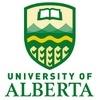Explore all the information on
Feed additives
Welcome to the page about Feed additives of Engormix; a source of knowledge on Feed additives.
Introduction Early fish development is the most important thing that should be known before producing any seeds, especially in the new cultured species or strain. Generally, early development is divided into egg, larvae and juvenile, whereas mostly fish embryos develop from transparent eggs [1] . According to Kendall et al. [2], the egg stage is divided into early, middle and late subdivisions, which end with blastopore closure, freeing of the tail bud from the yolk, and...
Comments : 0
Recommendations: 0
Dr. Markus Wiltafsky-Martin, Responsible for Service Commercialization at Evonik Animal Nutrition, underscores why AMINODat® 6.0, is the most comprehensive animal nutrition database in the world that comprises nutritional data of more than 18,000 feed ingredient samples from all over the world and over 900,000 analytical results. ...
Comments : 18
Recommendations: 17
.jpg&w=3840&q=75)

From waste to resources: A successful model of biocircular economy
Suggested link
There are several components of grain and plants that can cause detrimental effects on animal production. These components are commonly known as antinutritional factors. According to their mode of action, anti-nutritional factors can be grouped as follows: Substances that limit or decrease the digestion or metabolism of proteins, ex. lectins and saponins. Substances that interfere or decrease the correct utilization of minerals, ex. phytic acid and oxalic...
Comments : 0
Recommendations: 2
Consumers are basing their purchasing decisions on how the meat, milk, and eggs are raised. With more consumers and animal advocacy organizations pushing to reduce – or eliminate in some cases – the use of antibiotics in livestock production, several challenges have come to light. Many veterinarians and producers are...
Comments : 0
Recommendations: 0
...
Comments : 0
Recommendations: 1
Introduction Livestock farmers are transitioning to a production technique that uses few or no synthetic antibiotics at all in a new era. This is due to the increasing rate of antimicrobial resistance and more frequent notation of multidrug resistance strains (IPA, 2003). Environmental pollution, presence of toxic residue in the carcass leading to death of animal has also been identified as one of the disadvantages on indiscriminate use of antibiotics (Alagbe, 2019; Hyun et...
Comments : 0
Recommendations: 0
.jpg&w=3840&q=75)

From waste to resources: A successful model of biocircular economy
Suggested link
Introduction Medicinal plants are a rich source of phytochemicals and natural compounds (alkaloids, flavonoids, steroids, terpenoids, tannins and phenols) with marked therapeutic properties (Ruchika et al ., 2022; Roma-Marzio et al ., 2017). They are potential source of drugs and are traditionally used in the treatment of digestive disorders, measles, cold, cough, diarrhea, arthritis, skin disease, joint pain, hemorrhoids, fever, sore throat and sexually...
Comments : 0
Recommendations: 0
In this Interview, Dr. Detlef Kampf, Head of Animal Nutrition at DLG Competence Center Agriculture, shares his overview of trends in feed in 2022...
Comments : 0
Recommendations: 1
Introduction Phytogenics are plant derived materials with a potential to improve animal performance (feed intake, palatability and growth) and health status (gastro intestinal tract integrity and immune system). The use of phytogenics are increasingly gaining interest globally due to the recent ban on the use of antibiotics by the European Union in 2006 and its dangers to the environment, contaminated products which could lead to serious health dangers in...
Comments : 0
Recommendations: 0
Back in 2013, in the very first blog I published on the Insta-Pro website, I wrote about how extrusion processing, especially high-shear dry extrusion from Insta-Pro, was a reliable way to produce better ingredients and make it easier for animals to extract more dietary energy for productive purposes. Animals need energy to make meat, milk,...
Comments : 0
Recommendations: 2
.jpg&w=3840&q=75)

From waste to resources: A successful model of biocircular economy
Suggested link
Increasing focus on the nutritive value and well-being of farmed animals on account of growing meat consumption will potentially drive the demand for specialty animal feed additives in North America. There is a noticeable deficiency of essential nutrients in animal diets that usually is a mix of maize, wheat, and soybean meal.
Specialty animal feed additives in animal nutrition are ingredients like vitamins, amino acids, preservatives, and antioxidants, that are added in small...
Comments : 0
Recommendations: 2
“The global animal feed protein ingredients market size is predicted to surpass a valuation of USD 280 billion by 2027, as per a report by Global Market Insights Inc.”
Livestock animals have been a part of the global food supply for the longest time now, making animal feed an increasingly crucial element of the integrated food chain. In recent decades, population growth across developed and developing economies has pushed the demand for alternative food sources...
Comments : 0
Recommendations: 0
The video shows the story of Rhodimet® AT88 in key events: industrial projects, research initiatives, or development of services and expertise. Rhodimet® AT88 is a DL-hydroxy-methionine, containing 88% OH-Methionine with various benefits....
Comments : 1
Recommendations: 2
Introduction Plant derived additives have been identified to contain bioactive compounds with effects similar to antibiotic growth promoters in three main areas, i.e., gut micro-flora, antioxidant properties, and liver function without compromising intestinal health and/or the bird’s genetic potential (Hernandez, et al ., 2004; Singh et al ., 2021). The addition of plants and their extracts into diets is aimed at improving the productivity of livestock...
Comments : 0
Recommendations: 1
.jpg&w=3840&q=75)

From waste to resources: A successful model of biocircular economy
Suggested link
Marc Perel, Global Solution Application Manager at Adisseo, speaks about the use of additives in the feed mill, their value, good practices, among other topics....
Comments : 0
Recommendations: 3
Abstract published in Current Opinion in Biotechnology 2022, 75:102689. https://doi.org/10.1016/j.copbio.2022.102689. ...
Comments : 0
Recommendations: 0
...
Comments : 0
Recommendations: 0
INTRODUCTION The rangelands in the Southern Sinai are generally identified as an open shrub vegetation characterized by spare, slightly stands and semishrubs. The Chenopodiaceae family is the most widespread family as it has an interesting geographical distribution in Egypt as well as numerous countries all over the world. The native natural vegetation varies greatly in their species, varieties, productivity, chemical composition and nutritive value from location to another...
Comments : 0
Recommendations: 0
.jpg&w=3840&q=75)

From waste to resources: A successful model of biocircular economy
Suggested link
...
Comments : 0
Recommendations: 0
...
Comments : 0
Recommendations: 0





.jpg&w=3840&q=75)













